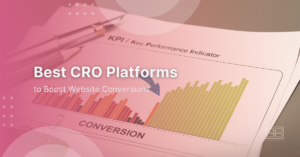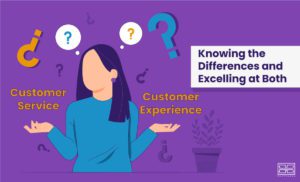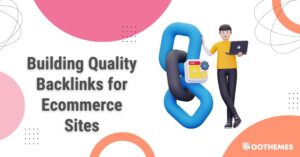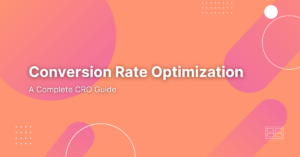Persona mapping does not sound like the most complicated thing, but it has some complexities we need to be aware of.
A successful company constantly learns what its consumers want and how to provide it to them in the best manner possible. If you know what they want, you can improve your website’s UI, landing page design, or even content, making it more conversion-friendly by providing them with what they want. Additionally, you should consider the customer journey map.
This is when the buyer persona and persona mapping come into play. You can’t sell anything until you know who your client is. Period.
The main issue with marketers is that they continue to play the “game of chance” when defining customer personas. By having a hazy customer image, you miss out on the core of your marketing message. You will constantly be shooting in the dark, hoping for the best.
To avoid making such a marketing mistake, learn how to build buyer personas. You will understand your consumers better and generate marketing messages optimized for conversions.
What is a Persona Map?
The process of creating fictitious but realistic profiles of our target consumers is known as persona mapping. They represent qualities such as personal characteristics, objectives, motives, attitudes, and so on.
Why is persona mapping critical?
Persona mapping provides a deeper understanding of our consumers than conventional research and demographic techniques. It enables us to develop more customized tactics, thus improving the client experience.
What are the stages of persona mapping?
Persona mapping is a process. Every process is made up of some steps and persona mapping s not an exception. You cannot think of it as a button that you press and BOOM, everything is perfect. It will take time and energy to get practical results from it.
Here are some steps and stages that you need to consider when doing persona mapping.
1. Begin with fundamental demographics.
It is critical to understand basic demographics such as age, gender, profession, and geography. We shouldn’t draw conclusions about consumer personas based only on demographics. However, they do offer preliminary information. The manner in which we contact consumers to get additional personal information about them, for example, may be influenced by their age. It may also help us think about the kinds of questions we’d want to ask about these individuals. We may learn about such demographics by conducting surveys, utilizing a social media monitoring tool like WatchThemLive, and looking at our current customers.
However, persona mapping does not end there!
2. Determine what information you want to learn about your clients.
Next, we need to decide what kind of additional information we want to include in our persona mapping and how in-depth we want to go. Remember that the more information we have, the more targeted and personalized our client experience can be.
Here are some questions to think about:
- What is the most challenging aspect of their job?
- What kind of phone do they have?
- Do they make use of social media? If so, what do they do with it?
- What are their professional objectives?
- What is a typical day in life?
- How many hours do they work each week?
- What are their core beliefs?
- What kind of purchasing experience does the consumer want?
3. Look into it further.
Knowing more detailed information about our consumers allows us to focus our messages more effectively than relying on superficial assumptions like gender and age.
Media monitoring technologies may assist us in understanding the subjects of discussion, tone, and social networks with which our audience engages. Furthermore, we can benefit from behavioral targeting to obtain more details. We may also discover more about the influencers with whom our target audience interacts, as well as what they read, discuss, and how they communicate. This may provide us with a better understanding of our target audience’s aspirations and lifestyle. A mix of media monitoring, focus groups, and surveys will likely provide us with a general image of our target market.
4. Monitor competitors.
Tracking rivals to identify who they are targeting allows us to remain in the industry. For example, staying up to date with who they are targeting will enable us to quickly detect new market possibilities or dangers from investing in duplicate audiences. We may accomplish this by reviewing their blogs and social media accounts. Who are their posts addressed to? For example, blog articles like ‘How to Impress as a Marketing Intern’ are a dead giveaway of who they’re aiming for.
As previously said, we may utilize social media monitoring to learn about our competitors’ consumers’ good and bad experiences. We can learn what they are criticizing or raving about. Knowing more about our prospective consumers, we can better tailor our customer experience strategy to differentiate ourselves from the competition. This may be used as part of your persona mapping.
5. Examine characteristics.
We may begin to categorize personality characteristics together once we have this information. Avoid returning to the “basic” targeting strategy, such as combining all of the “marketing managers, men, those who are/aren’t married”. We may construct several unique personas based on similar hobbies, lifestyles, and job positions using all of our gathered information. Simply keeping track of recurring responses will enable us to start collecting characteristics to form our personalities.
6. Compare Personas to a Checklist.
The ‘REACT’ technique is a fantastic way to see whether we’ve gone far enough with our persona mapping.
Real: Make sure our personalities reflect the consumers we have, not the ones we desire. Also, instead of creating easy stereotypes, make sure personalities are founded on the extensive study.
Exact: Similarly to our prior point, we must avoid overgeneralization by creating distinct personas that are more than ‘male 45-55’.
Actionable: Is it possible to develop a customer strategy based on the personas we have? If not, we’ll need to go deeper to learn more about each character.
Clear: Is it clear that someone else might comprehend the persona? Would they be able to relate a narrative about the persona’s day in life? If they cannot, we must go back and make this feasible.
Testable: Put the personalities to the test in the field. Return to interview participants and ask whether they believe the character accurately reflects them. Change our communication tactics to reflect our new identities. Take a look at how our audience is responding to the message. Are more people participating? Is there a more favorable attitude about our brands?
What information should my personas have?
Your buyer persona template should contain the following information:
- Name, age, location, hobbies, and other personal information.
- Information about their business experience, such as their job title, whether or not they are a decision-maker, and the kind of impact they may have on decision-makers.
- You should assign each persona to a particular audience group. Be as detailed as possible — for example, if the brand has established its distinct market segments, you should include this information here as well.
- A day in the life of the character, including a first-person description from the persona themself. This is significant because readers should begin to get a complete grasp of the character from this point on.
- Objectives are specific. It’s critical to be as concentrated and targeted as possible here. To put it another way, don’t simply say, “Grow profits.” “Remove the inefficiencies that are impeding a quick time-to-market,” you say.
- The main issues. Again, specificity is essential. Investigate – what irritates this buyer persona? What is preventing them from achieving their goals?
- Job-related orientation. This aspect of the consumer persona may be very informative. For example, a youthful persona who is new to the profession will need extra effort in terms of awareness and education. A character who has been in her job for 15 years and is a confident mentor and leader, on the other hand, will need a more authoritative tone that does not speak down to her.
- Open-ended questions, such as those that the persona would ask at various times during the customer experience, and how they connect to their personality and role.
- Their content preferences matter. How does the consumer persona like to consume information, given what we know about them? This includes preferred channels, the tone, style, and voice that will resonate the most, content formats, and other factors.
- Keywords, such as those related to the persona’s role in the company and the problems they’re attempting to address.
You can also ask these questions to form a more complete buyer persona.
Conclusion
That should be plenty to get you started with persona mapping. Remember that personas must be updated frequently to remain relevant. Mapping content to each person and their life cycle stage becomes a lot simpler if we have a clearer understanding of who we’re targeting.
![You are currently viewing What is Persona Mapping? [+How to Create a Persona Map in 2022]](https://www.hoothemes.com/wp-content/uploads/2021/10/Want-To-Be-Amazing-At-Persona-Mapping-Hereu2019s-How.jpg)
![Read more about the article Instagram Insights Explained in 2022 [Views, Reach, Impressions]](https://www.hoothemes.com/wp-content/uploads/2021/09/Instagram-Insights-Explained-Views-reach-and-impressions-1-300x182.jpg)







